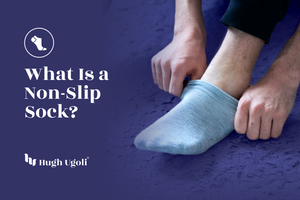Air travel presents unique challenges, especially for individuals managing diabetes. The right pair of socks can significantly enhance your travel experience, providing not only comfort but also vital protection for your feet. In this comprehensive guide, we explore the best diabetic socks for air travel, focusing on features like breathability, support, and moisture-wicking capabilities that are essential for long flights. From preventing swelling to reducing the risk of circulatory issues, discover how choosing the right diabetic travel socks can make your journey safer and more comfortable. Whether you're looking for compression benefits or seamless construction, our guide covers the top picks and key considerations for diabetic passengers.
Why Diabetic Socks?
Diabetic socks are designed to provide extra support, minimize friction, and offer superior moisture-wicking properties. These features are essential for socks for people with diabetes, who are more susceptible to foot injuries and infections. Keeping your feet dry is crucial, and diabetic socks excel. The levels of diabetes can vary from person to person, and the right pair of stockings can make a significant difference in comfort and health.

The Science Behind Diabetic Socks
Understanding the science behind diabetic socks can help you make an informed decision. These socks are engineered to control moisture, which can reduce the risk of fungal infections. The moisture-wicking materials like merino wool keep your feet dry and less susceptible to blisters. Some might wonder if they can wear regular socks during a flight if they have diabetes. However, it's highly recommended to wear diabetic socks for their added benefits.
Importance of Diabetic Socks for Air Travel
Air travel presents unique challenges, especially for individuals with diabetes. Long periods of immobility during a long flight can lead to poor blood flow in the legs and feet, increasing the risk of deep vein thrombosis (DVT) and other medical conditions. It is where diabetic socks come into play, specifically engineered to promote improved blood flow.
These socks' extra support can be particularly beneficial during a long flight. They often feature graduated compression, which means the reduction is more robust at the ankle and decreases as it moves up the leg. This design helps to push blood back towards the heart, improving circulation and reducing the risk of blood clots. The ideal compression level for diabetic travel socks usually falls between 15-20mmHg and 20-30mmHg.
Moreover, the moisture-wicking properties of diabetic socks are invaluable during air travel. Airplane cabins are notoriously dry environments, exacerbating skin dryness and irritation. Diabetic socks from materials like merino wool can help keep your feet dry, reducing the risk of fungal infections and foot odor.
Another important aspect is the cushioning and padding that diabetic socks offer. Air travel often involves walking through large airports, standing in security lines, and sitting for extended periods. The extra cushioning in these socks provides comfort and protects against foot ulcers, a common concern for people with diabetes.
Lastly, it's worth noting that many people with diabetes also have peripheral neuropathy, which reduces sensation in the feet. Diabetic socks are often made with softer seams and a seamless design to minimize irritation and pressure points, making them an excellent choice for air travel.
Key Features to Look For
- Material: Opt for socks made of moisture-wicking materials like merino wool.
- Compression: Mild to moderate reduction is ideal for promoting blood flow.
- Seamless Design: A seamless design minimizes friction and the risk of blisters.
- Cushioning: Extra support in the heel and toe areas provides added comfort.
How to Choose the Right Pair
When selecting diabetic socks, consider the following:
- Fit: Ensure the socks fit snugly but not too tight.
- Length: Choose between knee-high or ankle-length based on your preference and levels of diabetes.
- Reviews: Always check customer reviews for real-world insights into wearing diabetic socks.
Practical Tips for Air Travel with Diabetes
- Keep an extra pair of diabetic socks in your carry-on.
- Stay hydrated, but avoid caffeine and alcohol, which can affect blood flow.
- Walk around the cabin every hour to promote improved blood flow.
- For a long flight, changing your socks at least once is advisable to ensure your feet stay dry.
- Consult your healthcare provider for personalized advice on medical conditions.
Choosing the right diabetic socks can significantly impact your travel experience. Diabetic socks offer not only comfort but also minimize potential health risks. So, the next time you plan an air travel adventure, pay attention to the importance of packing the right socks.
















